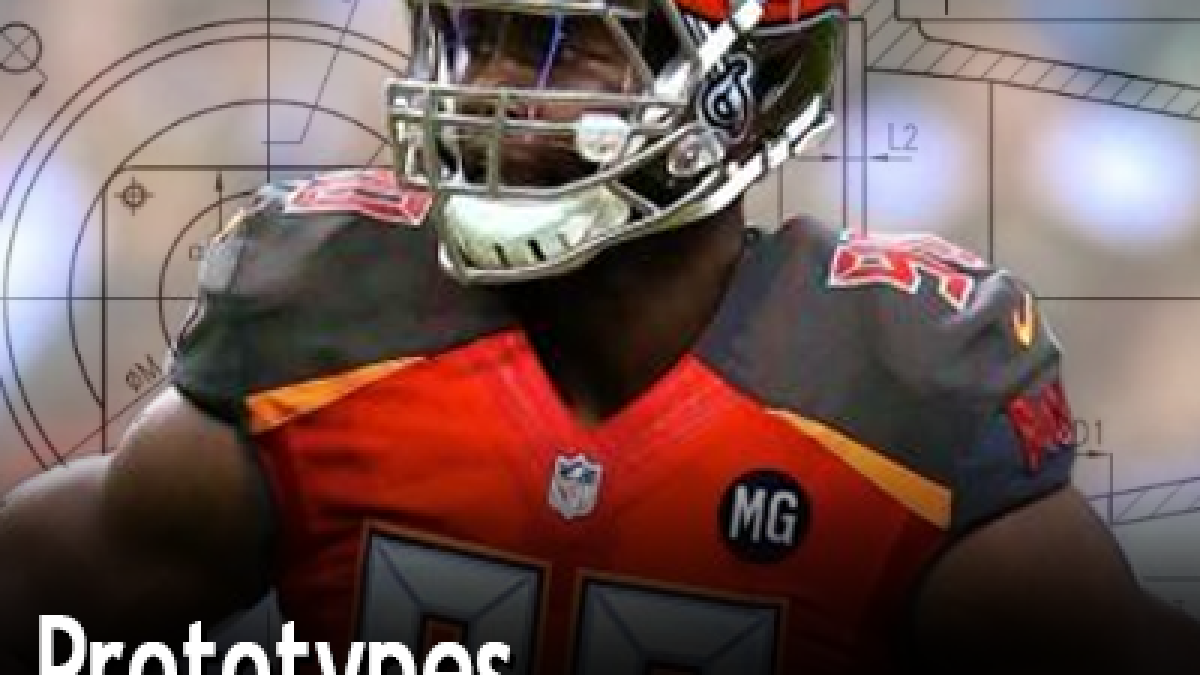 We continue our tour around the prototypes for the defensive line techniques by moving on to a group of techniques that we will collect together. These three collectively encompass the most usual alignments of 4-3 defensive ends, but you will also find 3-4 ends and outside linebackers lining up in these spots, too.
We continue our tour around the prototypes for the defensive line techniques by moving on to a group of techniques that we will collect together. These three collectively encompass the most usual alignments of 4-3 defensive ends, but you will also find 3-4 ends and outside linebackers lining up in these spots, too.
The 6- and 7-technique as well as players that line up directly in the C-gap (the gap between the offensive tackle and tight end).
If there’s one theme in these articles it is that the technique data shows that there is rarely a true exact prototype in terms of the traditional positions we have all become used to. The lines have blurred between them all and where players line up is intrinsically linked to how the offense deploys both in terms of formation and personnel.

At one point there was more definition between the exact alignments a 4-3 end could find himself in, and they resulted in the DRE being more of a pass-rush specialist and the DLE being more of a ‘power’ end; a run stuffer whose pass rush was more focused on his strength because he would have to contend with tight ends. Today teams move their personnel around and the left end is just as likely to be your speed rusher (Cameron Wake…) as the right end is.
When you group the three technique spots together you end up with a perfect spike that typifies 4-3 defensive ends. The graph shows the five players who played the greatest percentage of their snaps at these three spots and they are all prototype players for that position.

The player with the largest spike, and therefore greatest percentage of his snaps there is Michael Johnson. He leaves a scheme in Tampa and returns to Cincinnati in 2015, but he will likely see a very similar level there and be employed almost in exactly the same manner.
Everson Griffen shares an almost identical graph with the player he replaced in Minnesota, Jared Allen, as both players occupied almost the same role last season for their respective teams. How Allen is deployed this season for the Bears, assuming he makes their roster, will be an interesting thing to monitor. Allen does not seem like a natural fit for a 3-4 either as a down lineman or as a stand up linebacker, and may have to ply his trade strictly in sub-packages, which would be a first for him.
Chris Clemons in Jacksonville was the player that played the LEO position in that Seattle-inspired scheme, but while the other end would line up in an unconventional spot, the pass-rushing side was business as usual compared to other more vanilla 4-3 defenses.
The unusual member of this list is Junior Galette from the Saints and Rob Ryan’s 4-3 defense. You’ll find people that will tell you that the Saints actually run a 3-4 front, but it’s just not true. The team played a three-man line on only 20% of defensive snaps in 2014, and that number actually goes down looking only at first downs (17%). They are a 4-3 team, albeit one that has its roots in that Ryan style of unconventional fronts. Galette lined up at defensive end in a four man line on 481 of his 812 defensive snaps last year, but as we can see from the graph, his alignment regardless of the front was almost identical to a traditional 4-3 defensive end.
Defensive fronts may have become more multiple and subtle, but the bottom line is your standard pass-rushing end is lining up in more or less the same spot across the board.
Follow Sam on Twitter: @PFF_Sam


 © 2024 PFF - all rights reserved.
© 2024 PFF - all rights reserved.